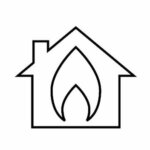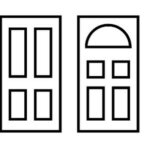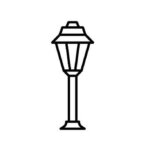
Tysers announces senior roles for Tysers Singapore
Tysers is delighted to announce the appointment of Babita Rai as CEO, Tysers Singapore, and William Furness-Smith as Head of Marine, APAC. Babita Rai Babita…
You are using an outdated, unsupported browser that may not display this website properly.
Please upgrade to a modern browser for a better browsing experience. We suggest:
Cold weather and excessive rain poses many additional risks for commercial properties including damage to buildings and contents, injuries to employees and members of the public, and increased risk
of break-ins.Commercial Property Owners should be aware of the additional risks of very cold and wet weather, and take additional measures to ensure their buildings, employees and visitors stay safe during winter.
Here are some steps you can take to reduce these risks:

Take particular notice of any green discoloration on copper pipes as this could be a sign of leaking. Clearing blocked drainpipes is also important as these can freeze and shatter in cold weather or impair essential drainage during heavy rainfall.

Buildings that remain unheated for extended periods of time are liable to frozen pipes which can burst causing flooding or building damage.

Ensure that pipework and tanks in susceptible areas such as lofts areas are fully lagged as wind chill is often more severe in such locations with a consequent increase in the chance of burst apparatus.

Swelling and shrinking from wet and cold weather can lead to stiff mechanisms. This could lead to health and safety risks if fire doors are unable to be opened easily in case of emergency. Criminals may also be able to exploit gaps in doors and windows, or stiff security latches which did not close correctly.

This risk assessment should account for risks associated with ice and snow such as snow falling from roofs and risk of slips, trips or falls from hazardous walkways around the building.

If additional heating is being used during cold weather (e.g. portable heaters) ensure these appliances are PAT tested and risk assessed. Faulty devices or heaters plugged into extension leads could be a fire hazard and overloading electrical outlets can also cause electrical faults. It’s also important to inform your insurance company of any changes such as the use of portable heaters to ensure you stay covered.

It’s important to check that exterior lighting is working and sufficient to cover areas around the building that may be hazardous e.g. pathways and carparks. Employees or visitors accessing these areas with poor visibility will be at increased risk of trips, falls and accidents if they are unable to see icy ground underfoot.

Ensure the information on your insurance policies are up to date, and provides adequate cover for cold weather risks. It’s important to inform your insurer of any changes such as any change of use to your buildings. You should also check that your policy has sufficient cover for Public Liability or Employee Liability claims of injury, and that you are abiding by the terms of your policy by carrying out any necessary risk assessment for cold weather risks and reducing hazards where possible.

If you are unsure if your current level of cover is sufficient for your current property or business’ activities, or are looking for advice on how to manage your risks during the winter months, get in touch. We take the time to understand the unique risk factors for every clients and can advise the best cover to protect your business.
Tysers is delighted to announce the appointment of Babita Rai as CEO, Tysers Singapore, and William Furness-Smith as Head of Marine, APAC. Babita Rai Babita…
Tysers’ Marine Claims team is led by Chris Sydenham, Chairman and Karl Haynes, Managing Director, and prides itself on providing a dynamic response to handling…
